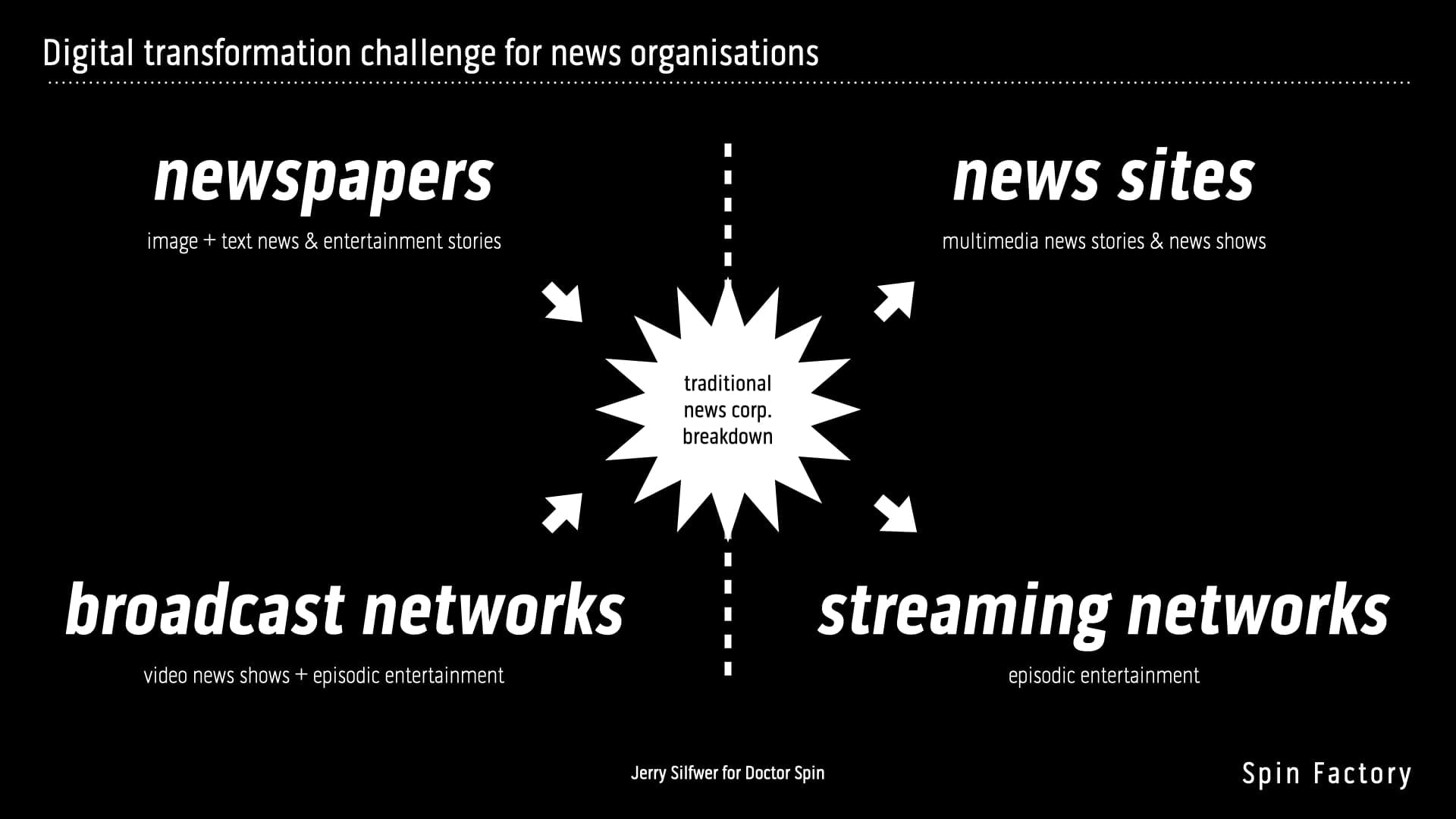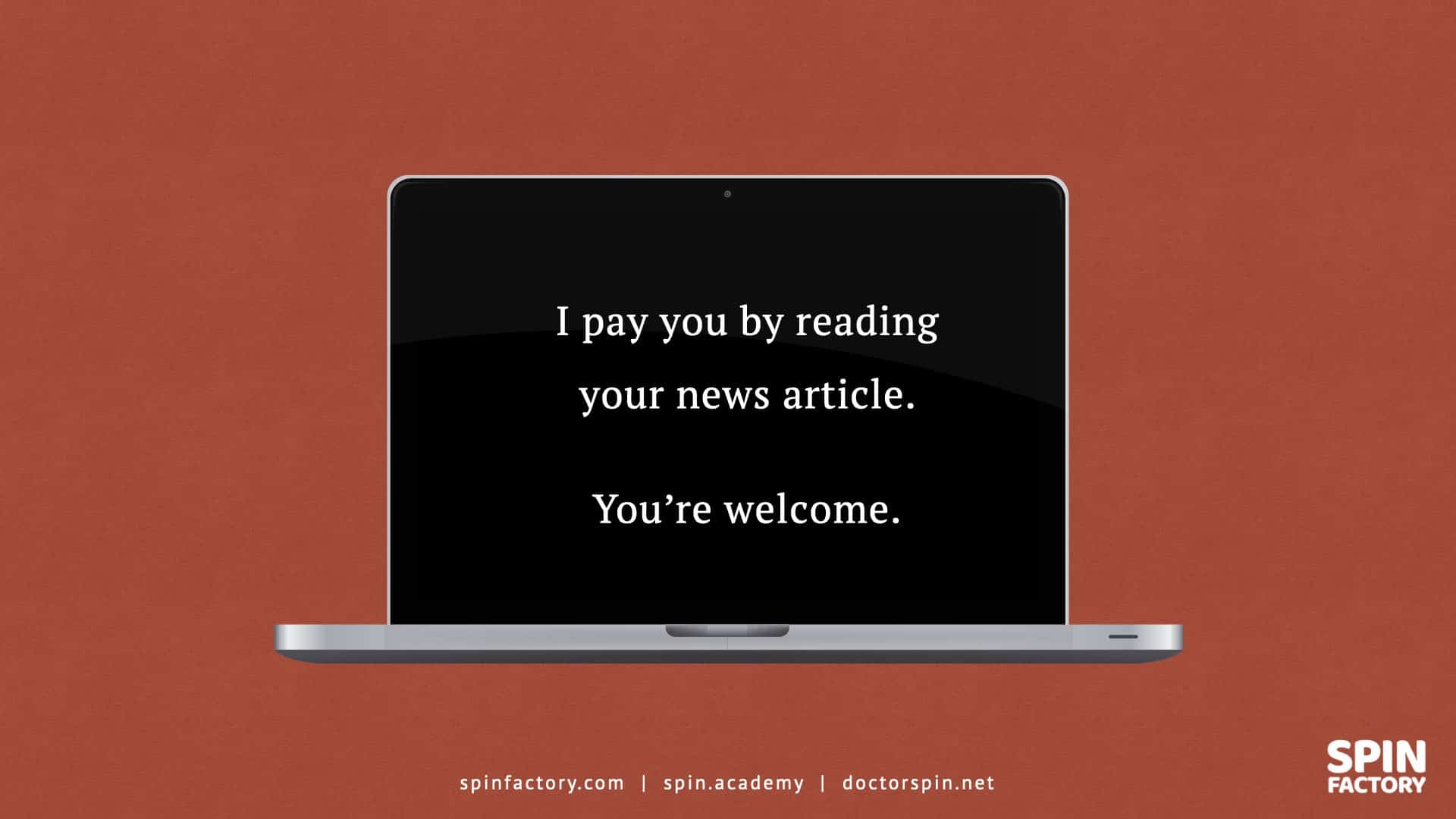Society’s digital transformation is breaking the news.
In this brief article, I’ll show you why online journalism must first break to survive in the online media landscape.
As a digital strategist, I’ve monitored media trends and digital transformation for organisations for over a decade.
Today, news providers have a choice to make.
Here goes:
A New Model for Online Journalism
In the past, readers, listeners, and viewers found the news in either newspapers or broadcasts.
However, the news media landscape of tomorrow will have little to do with newspapers or broadcast networks. Our traditional news providers are slowly becoming dusty relics of our non-digital past. Change is unavoidable. However, one cannot just take these two types of organisations, add digital distribution channels, and expect them to work.
We know that news sites and streaming services work, but unfortunately for many traditional news corporations, these two media platforms don’t work in tandem; this is why traditional newspapers and broadcast networks must first break.
Starting Points: Before Breaking
The Newspapers
Most “news sites” aren’t what they claim to be; they’re newspapers published on websites. Producing multimedia news for a digital context takes years — especially if the transition to digital revenue streams is slow and laden with trial and error.
Also, a news site cannot be successful on its own; it must coexist in symbiosis with search engines and social media platforms. Quality is always a factor in reporting the news, but the transitioning newspaper must build speed and volume. 1Silfwer, J. (2010, April 21). Digital First is the Way. Doctor Spin | The PR Blog. https://doctorspin.net/digital-first/
The Broadcast Networks
Broadcast networks generally have two separate value propositions: On the one hand, they produce high-quality news shows, and on the other, they provide episodic entertainment. Daily news content won’t survive if the broadcast network migrates into a streaming network. 2Silfwer, L. (2013, August 10). How to Pitch Television News. Doctor Spin | The PR Blog. https://doctorspin.net/pr-story/
Conversely, their episodic entertainment won’t survive if they move into the news site model. Since both models require a lot of effort, splitting the broadcast network into two separate entities might dilute the resources needed for the transformation.
Possible Outcomes: After Breaking
The News Sites
Some news providers will transition into news sites.
First, the news provider must build a user-friendly site with a best-in-class conversion design. Second, the news provider must be able to produce video news stories and quality news shows.
Also, they must transition their ad-based print model into a loyalty-based online subscription service — without locking away the actual news behind paywalls. 3Silfwer, J. (2020, February 12). The Future of Online News: How To Convert News Junkies. Doctor Spin | The PR Blog. https://doctorspin.net/future-of-online-news/
The Streaming Services
Some news providers will transition into streaming services.
Streaming networks have the most straightforward success strategy in the new landscape; they provide paying subscribers with the highest quality episodic entertainment. To stand out and accelerate growth, produce original content to attract and maintain audiences.
The main challenge is that streaming is costly, with fierce competitors like Netflix, HBO, and Amazon Prime. Like Last Week Tonight with John Oliver, some news shows can survive as a streaming format, but these are likely to be few and far apart. 4Silfwer, J. (2013, February 2). House Of Cards is Changing the Streaming Game. Doctor Spin | the PR Blog. https://doctorspin.net/house-of-cards/
Breaking the News
Tomorrow’s news must evolve into formats compliant with digital-first media logic regardless of the chosen route. 5Silfwer, J. (2020, February 12). The Future of Online News: How To Convert News Junkies. Doctor Spin | the PR Blog. https://doctorspin.net/future-of-online-news/

THANKS FOR READING.
Need PR help? Hire me here.

Annotations
| 1 | Silfwer, J. (2010, April 21). Digital First is the Way. Doctor Spin | The PR Blog. https://doctorspin.net/digital-first/ |
|---|---|
| 2 | Silfwer, L. (2013, August 10). How to Pitch Television News. Doctor Spin | The PR Blog. https://doctorspin.net/pr-story/ |
| 3 | Silfwer, J. (2020, February 12). The Future of Online News: How To Convert News Junkies. Doctor Spin | The PR Blog. https://doctorspin.net/future-of-online-news/ |
| 4 | Silfwer, J. (2013, February 2). House Of Cards is Changing the Streaming Game. Doctor Spin | the PR Blog. https://doctorspin.net/house-of-cards/ |
| 5 | Silfwer, J. (2020, February 12). The Future of Online News: How To Convert News Junkies. Doctor Spin | the PR Blog. https://doctorspin.net/future-of-online-news/ |




